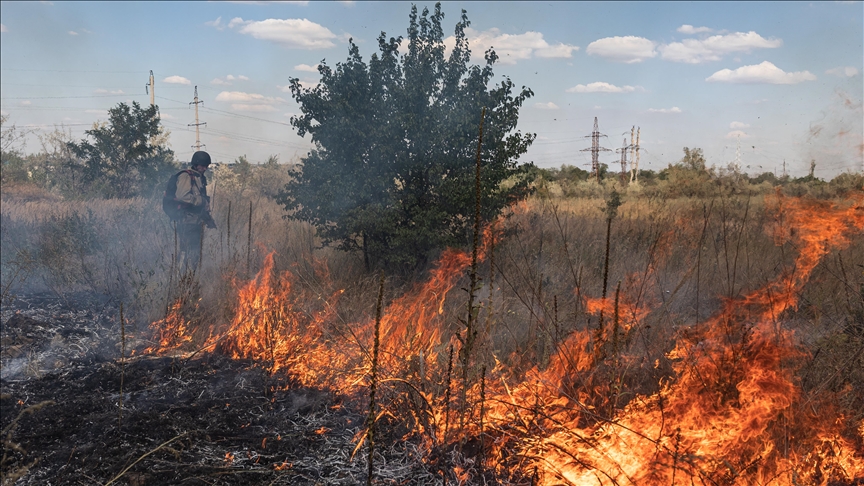Namibia's Iconic Etosha National Park Emerges from Devastating Inferno: A Week of Ecological Crisis and Heroic Response
- by RNG247, Namibia
- about 1 months ago
- 199 views

In a dramatic turn of events that has captured the attention of conservationists and tourists alike, Namibia's world-renowned Etosha National Park has finally emerged from the grip of a devastating wildfire that raged for over a week. The blaze, which consumed nearly a third of the park's vast expanse, has now been declared "contained" by Namibia's Environment Minister, Indeleni Daniel.
The fire, which began at a charcoal production site outside the park's boundaries, quickly escalated into an ecological crisis of unprecedented proportions. Fanned by strong winds and fueled by dry vegetation, the inferno spread beyond the confines of Etosha, engulfing hundreds of thousands of hectares of grazing land in regions bordering Angola.
Etosha National Park, famed for its expansive salt pan visible from space and home to the critically endangered black rhino, found itself at the epicenter of a battle against nature's fury. The park, which attracts around 200,000 visitors annually and boasts 114 mammal species, faced a dire threat to its rich biodiversity.
As the flames advanced, Namibian authorities mounted a massive response. Helicopters took to the skies while hundreds of soldiers joined firefighters, police, and volunteers on the ground. In a decisive move, Prime Minister Tjitunga Elijah Ngurare announced the deployment of over 500 additional troops to bolster the firefighting efforts.
The human toll of this natural disaster has, fortunately, been minimal, with no reported casualties. However, the animal kingdom has not been as fortunate. At least nine antelope fell victim to the flames, and the full extent of the wildlife impact remains to be assessed.
The fire's reach extended beyond the park's boundaries, threatening the livelihoods of surrounding communities. Grazing lands in the Oshikoto, Oshana, and Kunene regions were affected, though authorities now report these areas are under control.
As the smoke clears, the true scale of destruction is yet to be fully realized. Aerial photography missions are underway to map the affected areas and assess the damage. Initial estimates suggest that approximately 30% of the park's grazing land has been destroyed, raising concerns about the long-term impact on the park's delicate ecosystem.
The incident has not been without political repercussions. Opposition MP Likando Rodrick has criticized the government's preparedness and response, calling for improved long-term measures to prevent and combat such disasters in the future.
While the immediate crisis appears to be over, the aftermath presents both challenges and opportunities. Experts note that controlled fires can play a vital role in maintaining healthy savannah ecosystems. However, the scale and intensity of this blaze raise questions about future park management strategies.
As Etosha National Park begins its journey of recovery, the world watches with bated breath. The resilience of nature, coupled with human determination, will undoubtedly shape the future of this African wildlife haven. For now, as the last embers cool, Namibia can breathe a collective sigh of relief, having narrowly averted an ecological catastrophe in one of its most treasured natural wonders.





.jpeg)


.jpeg)







0 Comment(s)